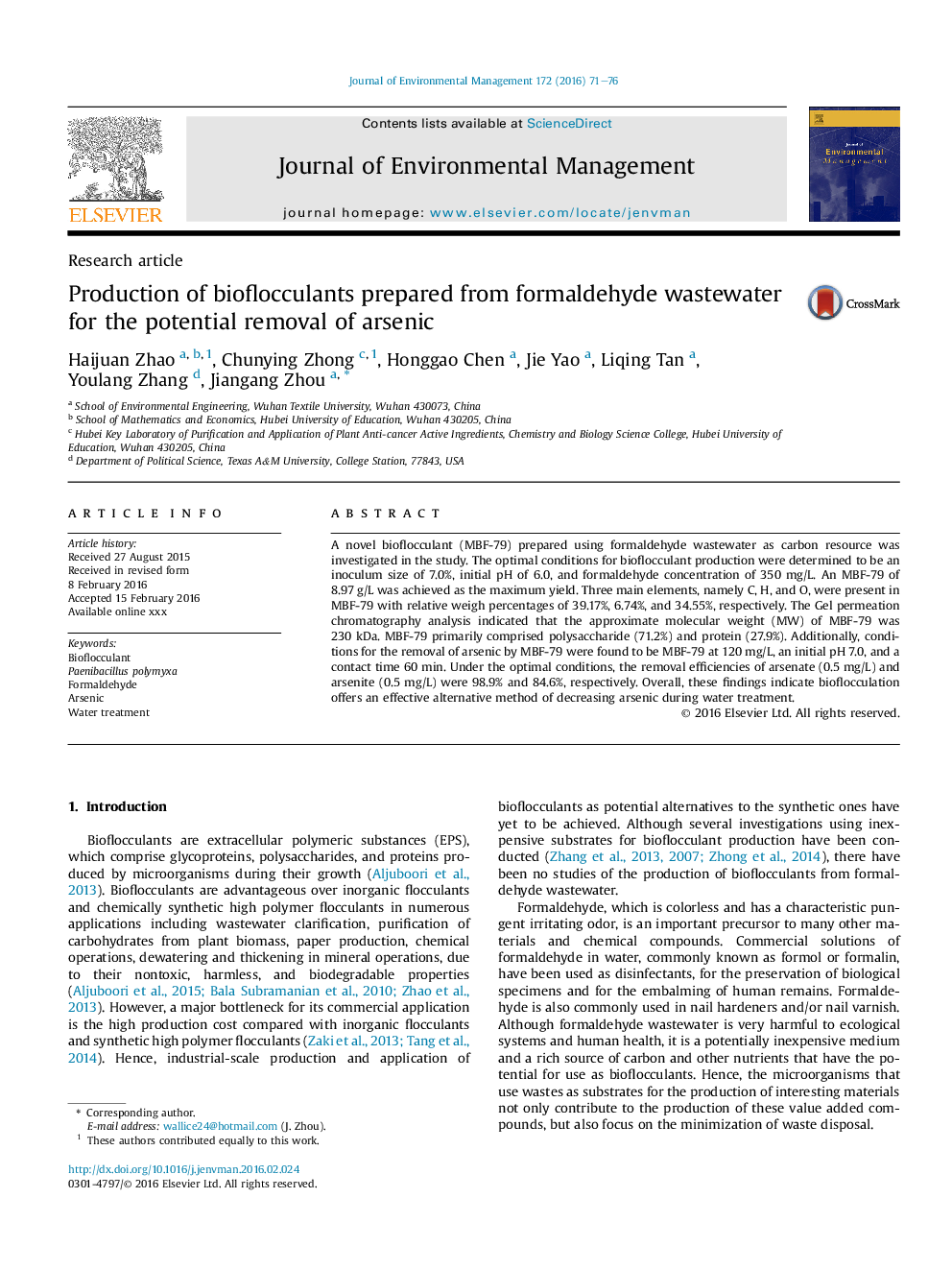| Article ID | Journal | Published Year | Pages | File Type |
|---|---|---|---|---|
| 7480580 | Journal of Environmental Management | 2016 | 6 Pages |
Abstract
A novel bioflocculant (MBF-79) prepared using formaldehyde wastewater as carbon resource was investigated in the study. The optimal conditions for bioflocculant production were determined to be an inoculum size of 7.0%, initial pH of 6.0, and formaldehyde concentration of 350Â mg/L. An MBF-79 of 8.97Â g/L was achieved as the maximum yield. Three main elements, namely C, H, and O, were present in MBF-79 with relative weigh percentages of 39.17%, 6.74%, and 34.55%, respectively. The Gel permeation chromatography analysis indicated that the approximate molecular weight (MW) of MBF-79 was 230Â kDa. MBF-79 primarily comprised polysaccharide (71.2%) and protein (27.9%). Additionally, conditions for the removal of arsenic by MBF-79 were found to be MBF-79Â at 120Â mg/L, an initial pH 7.0, and a contact time 60Â min. Under the optimal conditions, the removal efficiencies of arsenate (0.5Â mg/L) and arsenite (0.5Â mg/L) were 98.9% and 84.6%, respectively. Overall, these findings indicate bioflocculation offers an effective alternative method of decreasing arsenic during water treatment.
Related Topics
Physical Sciences and Engineering
Energy
Renewable Energy, Sustainability and the Environment
Authors
Haijuan Zhao, Chunying Zhong, Honggao Chen, Jie Yao, Liqing Tan, Youlang Zhang, Jiangang Zhou,
